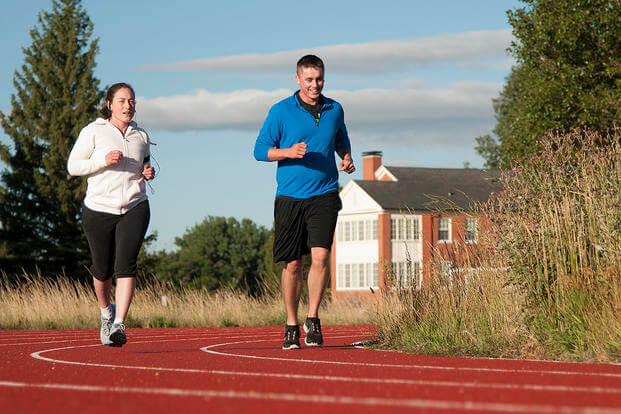Rhabdomyolysis is a word that not many people have ever heard of or experienced.
But recently, it has unfairly made the headlines with regard to difficult training programs such as CrossFit. I am not a CrossFitter, but this issue is part client and part trainer problem and not simply a CrossFit problem. Truth is, "rhabdo," as many people refer to it, is very common in many challenging training programs such as military boot camps, police and fire academies, and even professional football and bodybuilding. It is a deadly condition that should be studied by anyone who is a trainer, but also taught to students who are seeking challenging workout programs in harsh environments.
Defined in a 2010 U.S. Armed Forces study on active-duty cases, rhabdomyolysis is the breakdown of muscle cells that release proteins and electrolytes into the bloodstream. If not treated, rhabdomyolysis can be fatal and result in kidney failure, heart attack or stroke.
The symptoms of this usually self-induced condition starts with extremely sore and painful muscles, swelling and weakness. Dark or brown urine is another symptom that should get you to the hospital regardless, but it is what happens when proteins enter the bloodstream and the kidneys start to fail.
Rhabdomyolysis usually requires a perfect storm of things to occur. Yes, extremely intense workouts and military evolutions are common events that yield this condition. Add in high temperatures and humidity, poor hydration/electrolyte replacement, poor nutrition, drug or alcohol use, medications, and even weight-loss supplement use can increase your chances of getting rhabdomyolysis.
For instance, if you are in poor condition and do a new and challenging workout plan and you are on high-cholesterol medication, you could get rhabdomyolysis by simply doing 50 squats. It is amazing to think that a hard workout can have the same effects on your body as a car crash or a snake bite, where your muscles either are crushed or poison breaks down your muscles.
Your overexertion may not be someone else's. After going through SEAL training and several years in the teams, I only saw rhabdo once. That was during a pre-BUD/S screening program that was a 48-hour, nonstop, physically exhausting event. Most Special Ops candidates have prepared for the grueling events of their training, and rhabdomyolysis rarely is seen, even during Hell Week.
So if you go into a workout that states your group is going to do 100 pull-ups, 200 push-ups and 300 squats and you only can do five pull-ups -- stop. Reduce the numbers and do something much less than that.
If you cannot do 100 pull-ups in fewer than 10 sets, I would not even try this workout. Now your legs likely can handle the 300 squats "during" the workout, but after the workout, you likely will experience pain for 2-3 days. Depending on other elements such as your health, medications, heat and hydration, what might be delayed onset muscle soreness (DOMS) in some could be rhabdomyolysis in you.
It is your responsibility not to push yourself beyond your exercise/ fitness foundation and limits. It is also your trainer's job to pull back the reins on new clients and reduce workout intensity and time and observe how clients handle an assessment that would be easy to any of your long-term clients. No group training program is perfect for a single person specifically; it is both the client and trainer's job to figure out how to improve fitness individually. We should be able to trust our trainers -- their goal is to push us harder than we would push ourselves -- but we also have to trust and know our limits.
The best bet is to start off easy if you are in poor shape and deconditioned. Start off with a gradual training program that progresses in time, intensity, repetition and distance at 10%-15% each week. Exercising several days a week is required to go from deconditioned to healthy enough to join in group training programs. Never jump into an advanced program without preparing properly.
Stew Smith is a former Navy SEAL and fitness author certified as a Strength and Conditioning Specialist (CSCS) with the National Strength and Conditioning Association. Visit his Fitness eBook store if you're looking to start a workout program to create a healthy lifestyle. Send your fitness questions to stew@stewsmith.com.
Want to Learn More About Military Life?
Whether you're thinking of joining the military, looking for fitness and basic training tips, or keeping up with military life and benefits, Military.com has you covered. Subscribe to Military.com to have military news, updates and resources delivered directly to your inbox.


















